产品
FIB-SEM
Nanomanipulators
OmniProbeOmniProbe Cryo软件
AZtec3DAZtecFeatureAZtec LayerProbeTEM
Hardware
EDSUltim MaxXploreImaging
软件
AZtecTEM
30th May 2019 | Author: Dr Simon Burgess
As I said in my last post, EDS technology is developing ever more rapidly, with new hardware and software promising ever more sensitive and high-speed analysis.
Another common question concerns the interpretation of the fine detail in X-ray maps, and whether this is really showing a new level of detail in the variation of elements in a sample. The answer is that the latest EDS systems collecting data in the order of many 100,000 cps are sensitive enough to see minor variations in element concentration in a few minutes.
However, I always advise caution when interpreting such variations, because the sensitivity being reached is now enough to map changes in the level of the X-ray background. These background variations can give very similar looking results and trap the unwary into incorrect conclusions about their samples. When mapping any sample, you can select any element in the periodic table and you may see an interesting looking X-ray map. Take for example the slag sample I talked about last time and take a moment to study this X-ray map of the rare heavy metal Iridium (Ir).

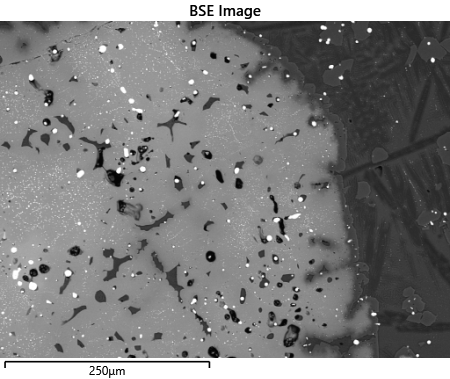
Iridium X-ray map of a slag sample collected for 8 minutes at 300,000cps with an Ultim Max 100 SDD detector compared to a backscatter electron image from the same area
It looks like there are some small phases with high Ir in a matrix containing two phases one having more Ir than the other, however, it is extremely unlikely that Ir is present in any concentration in the by-products of steel production. What we are seeing here is the variation in X-ray background caused by the atomic number difference between Iron particles (bright), spinel, and silicates (dull). This is a similar contrast to that seen in the backscatter electron image where the electron intensity is related to the same X-ray – sample interaction and proportional to the mean atomic number of each phase.
Of course, you may conclude that any material scientist working with Slags will discount any data presented on Ir as obviously an artefact, however, can the same effect be seen when looking at the variation of more important minor elements e.g. titanium (Ti) in this sample? We can also see some brighter phases within the spinel, when looking at the Ti X-ray map, are these real? Looking at spectra collected from the phases within the sample we can see that Ti is present in some phases but the variation in X-ray intensity is similar to the variation in the intensity difference of the background, so the second most intense signal at TiKa is for the phase with no Ti present at all (Spectrum 37 red).
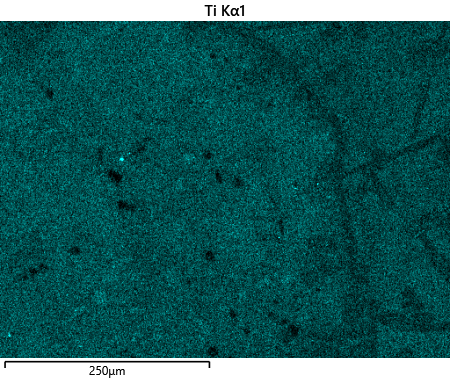
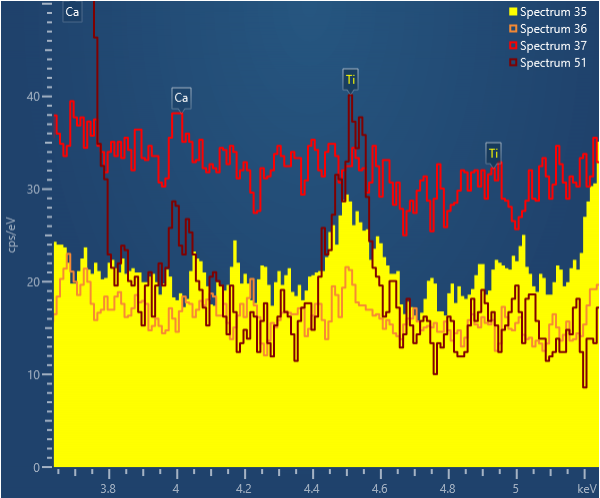
Titanium X-ray map of a slag sample collected for 8 minutes at 300,000cps with an Ultim Max 100 SDD detector. Spectra collected from different phases within the sample showing the signal around the TiKa energy
As well as careful data interpretation, help is at hand in modern EDS software. Oxford Instruments TruMap software corrects for peak overlaps and removes the X-ray background signal in real time during X-ray acquisition. This is invaluable for interpreting X-rays with high sensitivity that are now so easy to collect.
When we now examine the TruMaps of Ir and Ti from this area, we can confirm that Ir is indistinguishable from the noise and can be discounted, and we can see the real variation in Ti and identify with more confidence those phases which contain a minor amount of Ti.
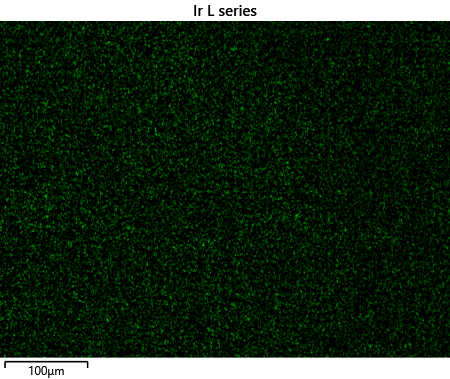
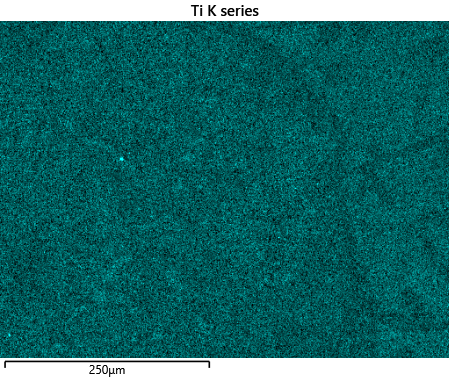
Iridium and Titanium TruMaps where variations in X-ray background have been removed from the data.
Modern EDS systems using fast, large area EDS detectors, can indeed in minutes collect X-ray maps with enough data to study minor variations in element concentration. This is one of the many breakthroughs in the capability of EDS in recent years. However, take care and make sure the variations you are seeing are not simply the result of variations in X-ray background intensity.
Unlock the potential of your microscope with AZtecLive and Ultim Max
Book a demo nowWe send out monthly newsletters keeping you up to date with our latest developments such as webinars, new application notes and product updates.
 公安机关备案号31010402003473
公安机关备案号31010402003473